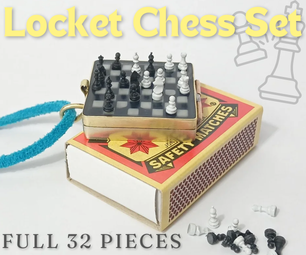Introduction: Treble Clef Pendant
With a few inches of wire and some basic tools you can make a treble clef pendant. Now if only that cute flute player from high school could see me now!
I’m using 16 gage wire. Twenty-five feet cost me less the $2.00 at the home improvement store.
I’m using 16 gage wire. Twenty-five feet cost me less the $2.00 at the home improvement store.
Step 1: Form the Treble Clef
Cut a section of wire and file the end square. Using cone nose pliers, form a hook as shown in the picture. Lay the hook on a hard surface and hammer the loop flat.
Work the pliers along the wire bending it in small increments. Little by little you’ll produce the curve of the treble clef.
Form the upper loop by grabbing the wire just above the hook and bending it around, down, and then behind the clef.
Form a small loop just under the clef. Once the loop in made use the pliers to collapse it a little.
Work the pliers along the wire bending it in small increments. Little by little you’ll produce the curve of the treble clef.
Form the upper loop by grabbing the wire just above the hook and bending it around, down, and then behind the clef.
Form a small loop just under the clef. Once the loop in made use the pliers to collapse it a little.
Step 2: Hammer the Sides
The back stem of the clef will be the dividing line. Lay the clef on the edge of an anvil. I’m using the head of a 5 pound sledge hammer as an anvil.
Hammer the sides of the clef evenly and on both sides. See the pictures.
Hammer the sides of the clef evenly and on both sides. See the pictures.
Step 3: Make It Shine
Polish the treble clef with progressively finer sand paper. I used 400 grit, then 1000 followed by 2000. I like to fold the sand paper over a small file. Finish it off with polishing compound on a buffing wheel.
Use a paper clip to make a jump ring.
Use a paper clip to make a jump ring.

Finalist in the
Dremel Jewelry Contest











